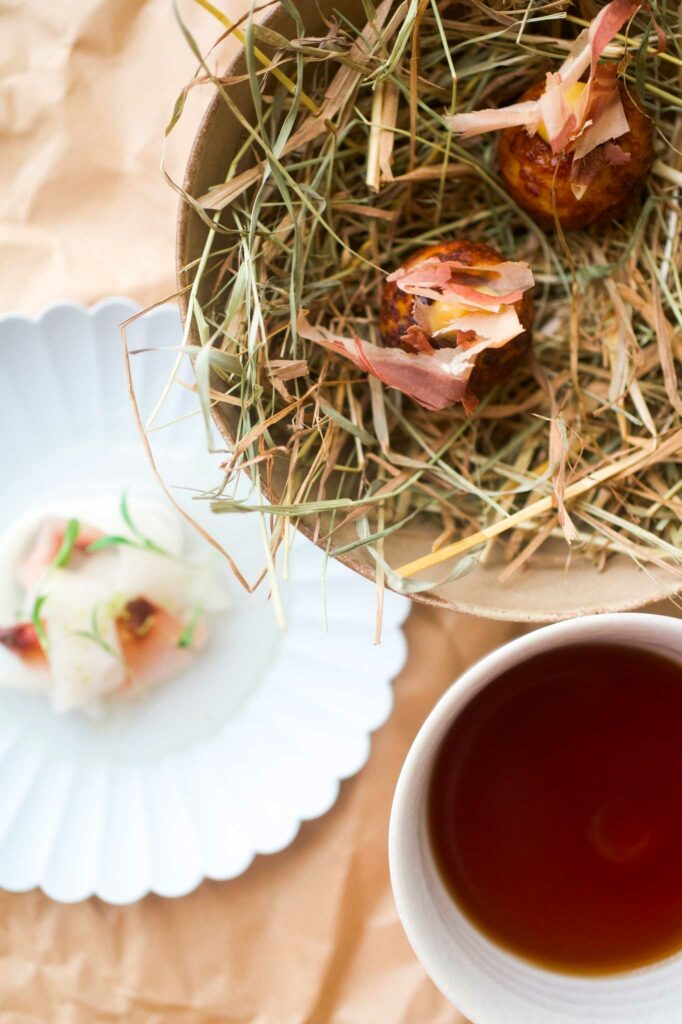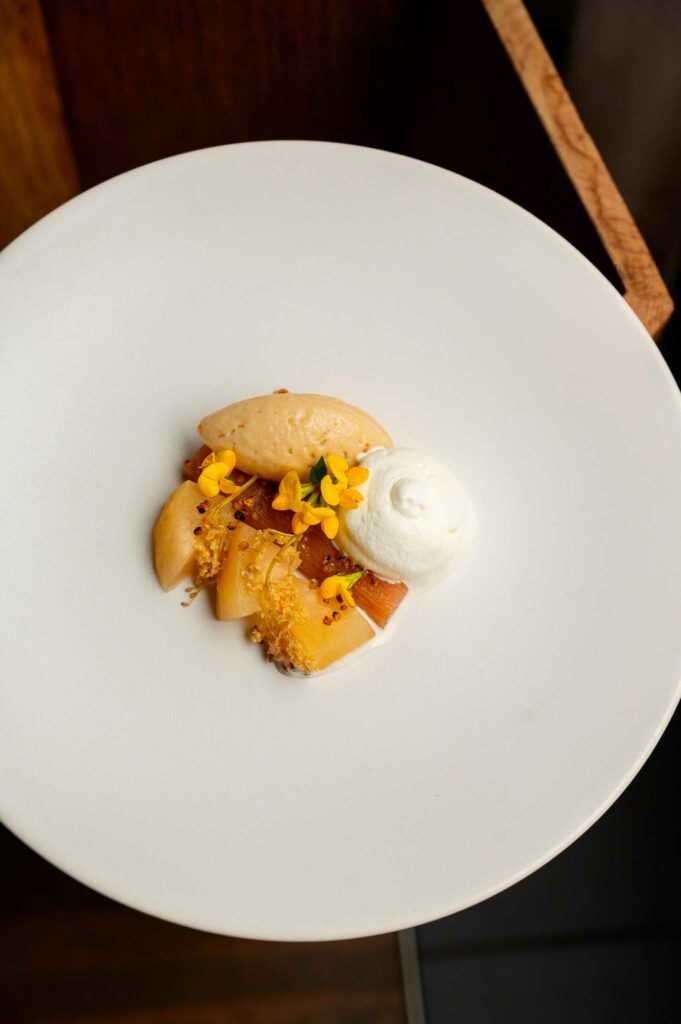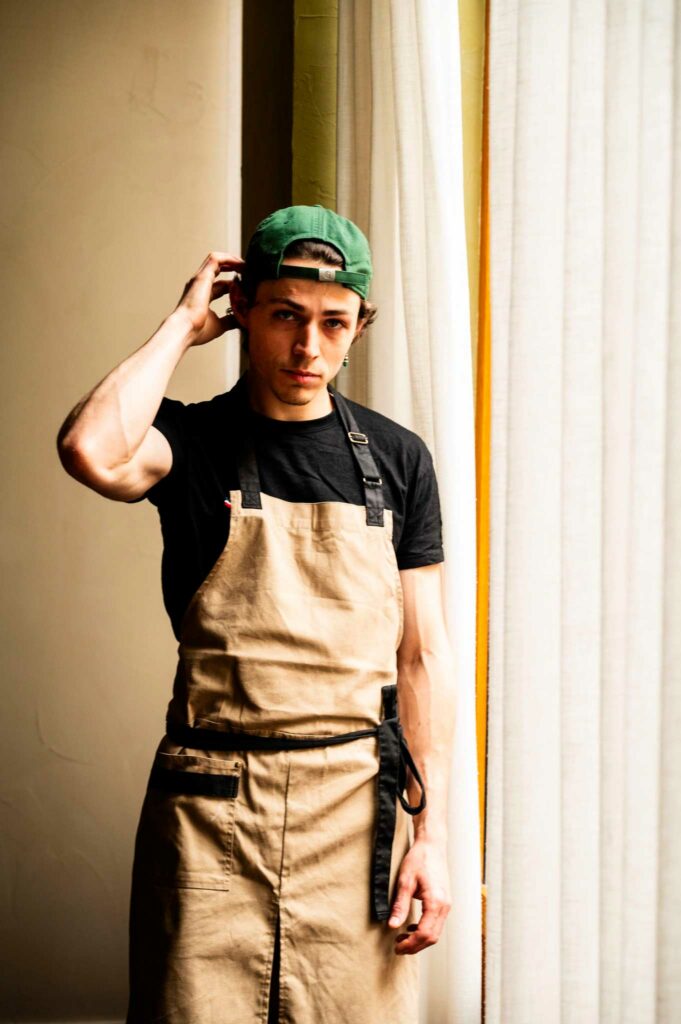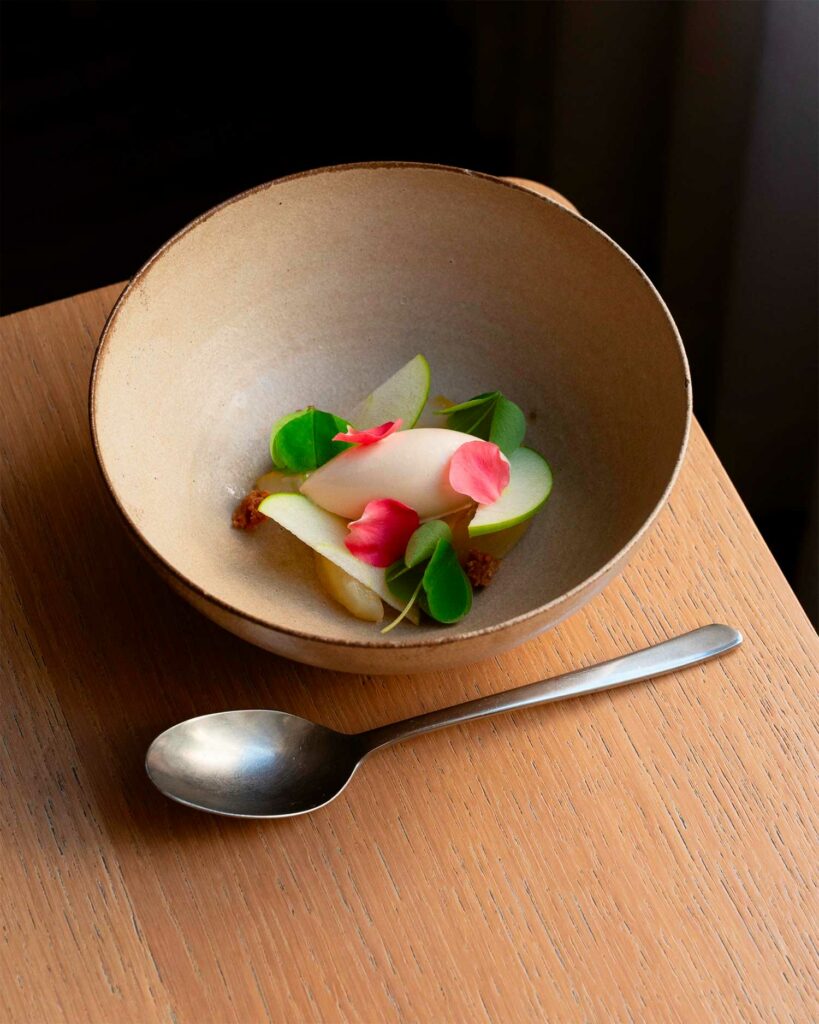
In Lyon’s 6th, Mertensia by chef Flavien Guarato champions a vegetable-first, Japan-tinged cuisine with marine accents, intimate design, tight menus, and careful sourcing.
Lyon has a new conversation piece. Tucked into the calm, residential 6th arrondissement, Mertensia is the debut restaurant of chef Flavien Guarato, a young cook whose résumé and restraint make him one of the city’s most compelling voices. After shaping his craft in serious kitchens and rising to sous-chef at Culina Hortus, he now signs a cuisine that places plants at the center and deploys seafood as a grace note. The room is small and serene; the tasting menus are concise and seasonal; the intent is unmistakably gastronomic. For diners curious about French gastronomy as it evolves—lighter, more botanical, yet rooted in craft—Mertensia is worth crossing town for. It also intersects neatly with French food culture today: terroir-driven products, precise technique, and a preference for flavor over fuss. If you’re charting a tour of fine dining in Lyon, pencil this in before it gets crowded.
The chef: vision and background
Origins and education
Flavien Guarato grew up in Saint-Galmier, closer to forests and rivers than to grand hotel kitchens. That early intimacy with nature—plants, ocean air, and the rhythm of seasons—would later become the backbone of his cuisine. He entered the profession young, learning the grammar of French kitchens in houses that prize transmission and product integrity. Among formative stops: Le Clos Fleuri, once tied to the Pierre Gagnaire story; Le Bougainvillier with chef Gérard Charbonnier; and La Ferme de Cupelin under Romain Desgranges. Those dining rooms taught him the fundamentals: respect for producers, clarity on the plate, and a sense of hospitality that is as important as the sauce.
A crucial chapter was his time at Culina Hortus in Lyon, a modern, plant-forward address acclaimed in the vegetable-cooking world. Rising to sous-chef there gave Guarato a platform to refine a vegetable-led language while keeping structure and depth. Another influence was Japan—particularly Nagano—where he absorbed a different set of reflexes: umami-rich pantry staples, an eye for seasonality that changes almost weekly, and the idea that a dish can be powerful without being heavy. Those years mapped the path to his own kitchen and, eventually, to Mertensia.
Culinary philosophy and style
Guarato’s cooking is modern French filtered through a Japanese lens. Vegetables play the lead; seafood appears as a counterpoint—iodine to the garden’s sweetness—rather than the other way around. He speaks often of “the living product,” a phrase you taste in the dishes: a braised endive with citrus and a saline note from trout roe; a lacquer of miso or kombu that adds dimension without shouting; the snap of seasonal roots beside a clear fish jus. The goal is equilibrium—fat, acid, bitterness, and umami—achieved with a light hand and a quietly technical approach. It reads as a contemporary expression of French cuisine that refuses to choose between Lyon’s terroir and a Japanese sense of restraint.
This is also a cuisine that belongs on the tasting menu format: short, sequenced, and paced. The kitchen takes what arrives from growers and the day’s catch, then builds eight movements at night (six at lunch), always in two versions: “Végétal” or “Végétal & Marin.” The distinction is philosophical rather than dogmatic; plants set the tone either way.
Awards and recognition
Mertensia is newly installed and already on the radars that matter. The MICHELIN Guide lists the address in Lyon with a clear profile of the chef’s vegetable-led, Japan-influenced approach and notes the minimalist setting in the former premises of Le Passe-Temps. Gault&Millau has likewise taken early interest, highlighting the two-menu concept and the clean, seafood-accented signatures. In the plant-cuisine sphere, We’re Smart World has flagged Mertensia’s “vegetables first” credo—a natural continuation of Guarato’s work at Culina Hortus, which itself earned international accolades for its botanical cooking. None of this feels like hype; the room and the plates show the sobriety that guides those mentions.
Broader influence
Guarato’s influence flows through choices rather than headlines: tight relationships with nearby producers; a pledge to adapt menus to allergies and diets without diluting intent; and a kitchen culture that treats vegetable technique with the same rigor as sauces and butchery. He has worked with teams on sustainable sourcing and often collaborates with artisans around foraged plants, freshwater fish, and heritage vegetables. For young cooks, Mertensia is an example of how sustainable cuisine can be gastronomic without preaching—a lesson that quietly reshapes the brigade.
The restaurant: concept and experience
Location and atmosphere
Mertensia sits at 52, rue Tronchet, a discreet address in Lyon’s 6th where the hum of traffic fades and conversation takes over. The space once housed Le Passe-Temps; some of the serenity remains. The décor is minimalist but warm: pale woods, soft greens, clean lines, and an airy feel that draws attention to the plate rather than the walls. There is a visible cellar—modest in size, curated with care—and seating is deliberately limited, which keeps the experience intimate. The mood is calm and attentive, closer to a studio than a stage. Service follows that lead: informative without choreography, paced for diners who want to listen to their table.
If you’re mapping French gastronomy in Lyon, the address forms an interesting triangle with old-guard institutions and the wave of contemporary, ingredient-led dining that has given the city fresh momentum. It’s a useful stop for travelers who value tone as much as technique.
Cuisine and signature dishes
The culinary offer is precise: two tasting menus, lunch in six sequences and dinner in eight, each available as vegetable-only or vegetable-and-marine. The menus change with the market and, crucially, with the small-boat fisheries that supply the kitchen; the team’s pledge is to evolve with the seasons and the catch rather than publish lists of “musts.”
That said, a few signatures have emerged. An amuse-bouche around octopus—tender, sometimes lightly cross-hatched and glossed—signals the Japanese whisper in the room. A braised endive, finished with a reduction of white wine and brightened with mandarin, is emblematic of Guarato’s way with bitterness and citrus. Iodine often arrives via trout roe, esturgeon, or mackerel given a short cure; umami might come from a gentle miso or from kombu that deepens a vegetable jus. Desserts follow the same logic: rice in contrasting textures, or fruit-led finales that trade sugar for ripeness and floral notes.
The produce list reflects the chef’s network of growers and fishmongers, many in the Rhône and along the Atlantic. Dishes are assembled with a deliberate economy: a few gestures, a focus on temperature and cut, and a preference for clarity over complication. It is the sort of plant-centric cooking that feels like modern French rather than an ideological detour—precise, seasonal, quietly technical, and very gastronomic.
The dining experience
Expect hospitality anchored in detail. The welcome is warm but uncluttered; explanations are brief and useful; pacing is measured so each sequence lands cleanly. Menus are adaptable to allergies and dietary needs—a point the house makes explicitly—without diluting flavor or form. Price points are aligned with the ambition and the neighborhood: approachable at lunch for newcomers to the style; more expansive at night when the kitchen stretches to eight courses.
The cellar is compact and thoughtful, with a Lyon-friendly bias toward terroir wines and a curiosity for producers working cleanly—useful for pairings that echo the kitchen’s restraint. Alcohol-free pairings can be arranged on request; the team thinks in terms of acidity, texture, and aromatics rather than sweetness. Overall, the experience reads as a dialogue between kitchen and guest, not a monologue. In an era of sensory overload, that discretion is part of the appeal.





Awards, sustainability, and other highlights
Mertensia’s listings in leading guides came quickly, and local press has championed the opening as a sign of Lyon’s broadening palate. Recognition aside, the restaurant’s practices are what set its compass: small-scale producers, a short menu that limits waste, and a seasonal rhythm that keeps stocks lean and ideas fresh. Seafood choices favor responsible sourcing and often spotlight underloved species, prepared with Japanese-leaning techniques that respect texture and flavor while minimizing intervention.
The broader story is continuity. Guarato’s years at Culina Hortus—hailed internationally for vegetable cooking—inform Mertensia’s kitchen culture without replicating it. Where Culina Hortus offered a fully vegetarian frame, Mertensia adds a marine register that expands the palette while keeping the plants in the foreground. It is a subtle but meaningful contribution to the city’s scene: a house that argues, persuasively, that a signature dish can be a carrot treated with the care once reserved for turbot.
Lyon’s quiet new benchmark for vegetable-first fine dining
Mertensia is not flashy; it does not need to be. The attraction is a chef with a distinct voice—seasonal, Japanese-tinged, anchored in French cooking technique—working in an intimate room where the plate is the protagonist. In a city that has always prized product and craft, Guarato’s proposition feels both timely and deeply French. For travelers mapping French gastronomy, for locals keeping an eye on the next wave, and for anyone who wants to see how a new generation elevates plants without dogma, this is a destination. Book a seat, choose the “Végétal” or “Végétal & Marin,” and let a young kitchen show how modern fine dining can be elegant, grounded, and green.
Cook in France is your independant source for food in France.